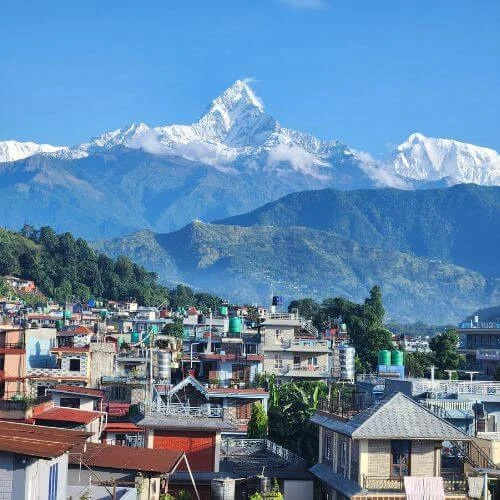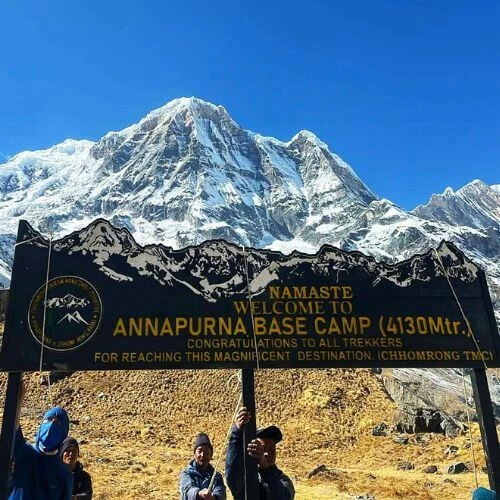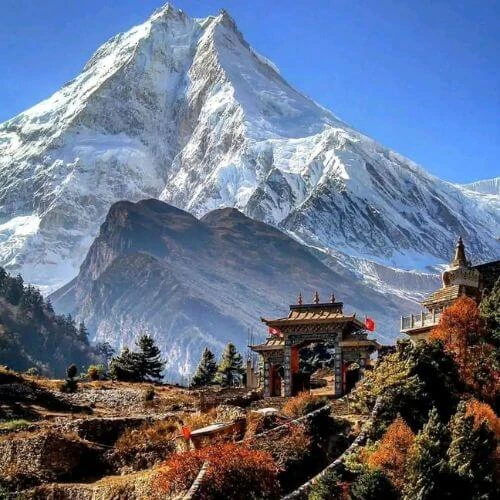The Origin and Evolution
The origin of Buddha Jayanti, also known as Buddha Purnima or Vesak, can be traced back to ancient Nepal, where it honors the birth, enlightenment, and death of Siddhartha Gautama, the founder of Buddhism. Born into the royal Shakya clan in Lumbini, Nepal, around 563 BCE, Siddhartha's life was marked by extraordinary events and profound spiritual insights that would shape the course of human history.
The festival's origins lie in the ancient kingdom of Kapilavastu, Nepal where Siddhartha's birth was indicated by auspicious signs and divination. As Siddhartha matured, he became increasingly disappointed with the material luxuries of palace life, yearning instead for a deeper understanding of human suffering and the nature of existence. At the age of 29, he renounced his princely status and embarked on a spiritual quest, determined to find a solution to the pervasive suffering he witnessed in the world. After years of rigorous meditation and ascetic practices, Siddhartha finally attained enlightenment at Bodh Gaya, under the Bodhi tree.

The celebration of Buddha Jayanti has evolved over the centuries, influenced by diverse cultural and regional traditions. In ancient India, the festival was marked by elaborate ceremonies and offerings at Buddhist monasteries and pilgrimage sites. As Buddhism spread across Asia and beyond, Buddha Jayanti took on new forms, incorporating local customs and beliefs while preserving the core teachings of the Buddha.
Today, Buddha Jayanti is celebrated with great fervor in countries around the world, including Nepal, India, Sri Lanka, Thailand, Myanmar, Japan, and many others. The festival is observed with prayers, meditation, offerings, processions, and cultural performances, reflecting the diversity and richness of Buddhist traditions.
Despite these variations, the essence of Buddha Jayanti remains unchanged, a celebration of enlightenment, compassion, and the timeless teachings of the Buddha. As Buddhists and non-Buddhists alike come together to honor the life and legacy of Siddhartha Gautama, the festival serves as a reminder of the universal quest for truth, liberation, and inner peace that transcends boundaries of time, culture, and geography.
When is Buddha Jayanti Celebrated?
Buddha Purnima, also known as Buddha Jayanti, typically falls on the full moon day of the Vesakha month in the Hindu lunar calendar, which usually corresponds to April or May in the Gregorian calendar. However, the exact date varies each year depending on the lunar calendar. For 2024, Buddha Purnima falls on Thursday, May 23rd.
In 2024, Buddha Purnima marks the 2,567th anniversary of Gautama Buddha's birth. This significant milestone underscores the enduring impact of his teachings and the timeless relevance of his message of peace, compassion, and enlightenment. As Buddhists around the world commemorate this auspicious occasion, they reflect on the profound legacy of the Enlightened One and strive to embody his principles in their lives.

The Birth of Buddha
The birth of Siddhartha Gautama, who later became known as the Buddha, is a significant event in the Buddhist tradition, celebrated as Buddha Jayanti. According to Buddhist scriptures, Siddhartha was born in Lumbini, Nepal, around 563 BCE, into the royal Shakya clan.
Legend has it that upon his birth, he took seven steps, and with each step, a lotus flower bloomed beneath his feet, symbolizing purity and enlightenment.
His father, King Suddhodana, was delighted at the birth of his son and sought to protect him from the harsh realities of life by shielding him within the confines of the palace walls. However, as Siddhartha grew older, he became increasingly disenchanted with the opulence and luxury of palace life, yearning instead for a deeper understanding of human suffering and the nature of existence.
Thus, the birth of Siddhartha marked the beginning of a transformative journey that would ultimately lead him to renounce his princely status and embark on a quest for enlightenment, culminating in his realization of the Four Noble Truths and the Eightfold Path. Today, the birth of Buddha is celebrated with reverence and joy by Buddhists around the world, symbolizing the potential for spiritual awakening and liberation inherent in all beings.
The Enlightenment of Buddha
The enlightenment of Buddha, also known as Bodhi or Nirvana, represents the culmination of Siddhartha Gautama's spiritual quest for truth and liberation. This great incident took place under the Bodhi tree in Bodh Gaya, India, where Siddhartha, after years of rigorous meditation and ascetic practices, finally attained supreme enlightenment.
The enlightenment experience can be understood through several key insights and realizations:
- Understanding the Nature of Suffering: Siddhartha gained profound insight into the nature of suffering (dukkha) and its causes, recognizing that attachment, craving, and ignorance lie at the root of human suffering.
- Realization of Impermanence: He perceived the impermanent and ever-changing nature of all phenomena, understanding that attachment to transient things leads to suffering.
- Experience of Emptiness: Siddhartha realized the emptiness (sunyata) of all phenomena, transcending dualistic concepts of self and other, and recognizing the interconnectedness of all existence.
- Awakening to Dependent Origination: He understood the principle of dependent origination, which elucidates the interdependence of all phenomena and the cyclical nature of existence.
- Attainment of Liberation: Through the direct experience of Nirvana, Siddhartha attained liberation from the cycle of birth and death, achieving a state of profound peace, wisdom, and compassion.
The enlightenment of Buddha marks a pivotal moment in human history, offering a profound message of hope and liberation to all sentient beings.

The Teachings of Buddha
The teachings of Buddha, also known as the Dharma, form the core foundation of Buddhism, guiding practitioners on a path towards enlightenment and liberation from suffering. These teachings are encapsulated in the Four Noble Truths and the Eightfold Path, which serve as a roadmap for leading a virtuous and fulfilling life.
1. The Four Noble Truths
- Dukkha (Suffering): The first noble truth acknowledges the existence of suffering and dissatisfaction in life, which arises from craving, attachment, and ignorance.
- Samudaya (Cause of Suffering): The second noble truth identifies the root cause of suffering as craving or desire, which leads to attachment and clinging.
- Nirodha (Cessation of Suffering): The third noble truth teaches that the cessation of suffering is attainable through the eradication of craving and attachment, leading to inner peace and liberation.
- Magga (Path to the Cessation of Suffering): The fourth noble truth outlines the Eightfold Path, a set of ethical and mental guidelines that lead to the cessation of suffering and the attainment of enlightenment.
2. The Eightfold Path
- Right View: Understanding the nature of reality and the Four Noble Truths.
- Right Intention: Cultivating wholesome intentions of renunciation, goodwill, and compassion.
- Right Speech: Speaking truthfully, kindly, and mindfully.
- Right Action: Acting ethically and abstaining from harming living beings.
- Right Livelihood: Engaging in a livelihood that is honest and does not harm others.
- Right Effort: Cultivating wholesome qualities and overcoming unwholesome tendencies.
- Right Mindfulness: Developing awareness of body, feelings, mind, and phenomena.
- Right Concentration: Cultivating focused attention and meditative absorption.
These teachings emphasize the importance of moral conduct, mental discipline, and wisdom in leading a life free from suffering and attaining liberation from the cycle of birth and death.

Celebrations and Rituals
Buddha Jayanti is celebrated with great fervor and devotion by Buddhists around the world. From elaborate ceremonies in temples and monasteries to simple acts of kindness and generosity, devotees come together to honor the life and teachings of the Buddha. Rituals may include offering prayers, chanting sacred texts, meditating, and performing acts of charity. Symbolic gestures such as bathing Buddha statues, lighting lanterns, and releasing captive animals as a gesture of compassion are also common.
Significance and Reflection
Buddha Jayanti holds profound significance for Buddhists, serving as a reminder of the timeless wisdom and compassion embodied by Lord Gautam Buddha. Beyond its religious connotations, the Buddha Jayanti Festival serves as an inspiration of hope and inspiration for people of all backgrounds, guiding humanity towards a path of harmony and enlightenment.
In a world plagued by conflicts and suffering, the teachings of Buddha offer a universal message of peace, compassion, and understanding.
By embodying these principles in our daily lives, we can also cultivate a more compassionate and harmonious world, where all beings can coexist in harmony and mutual respect.
One of the most remarkable aspects of Buddha Jayanti is its ability to transcend cultural, linguistic, and geographical boundaries, fostering a sense of unity and harmony among diverse communities. Buddhists from all walks of life come together to celebrate their shared spiritual heritage, bridging divides and nurturing mutual understanding and respect.

Conclusion
As we celebrate Buddha Jayanti, let us reflect on the timeless teachings of compassion, wisdom, and non-violence imparted by Lord Buddha. May this auspicious occasion inspire us to cultivate peace and harmony in our hearts and extend compassion to all sentient beings. In the words of Buddha, "Peace comes from within. Do not seek it without."



 based on 5 reviews
based on 5 reviews







